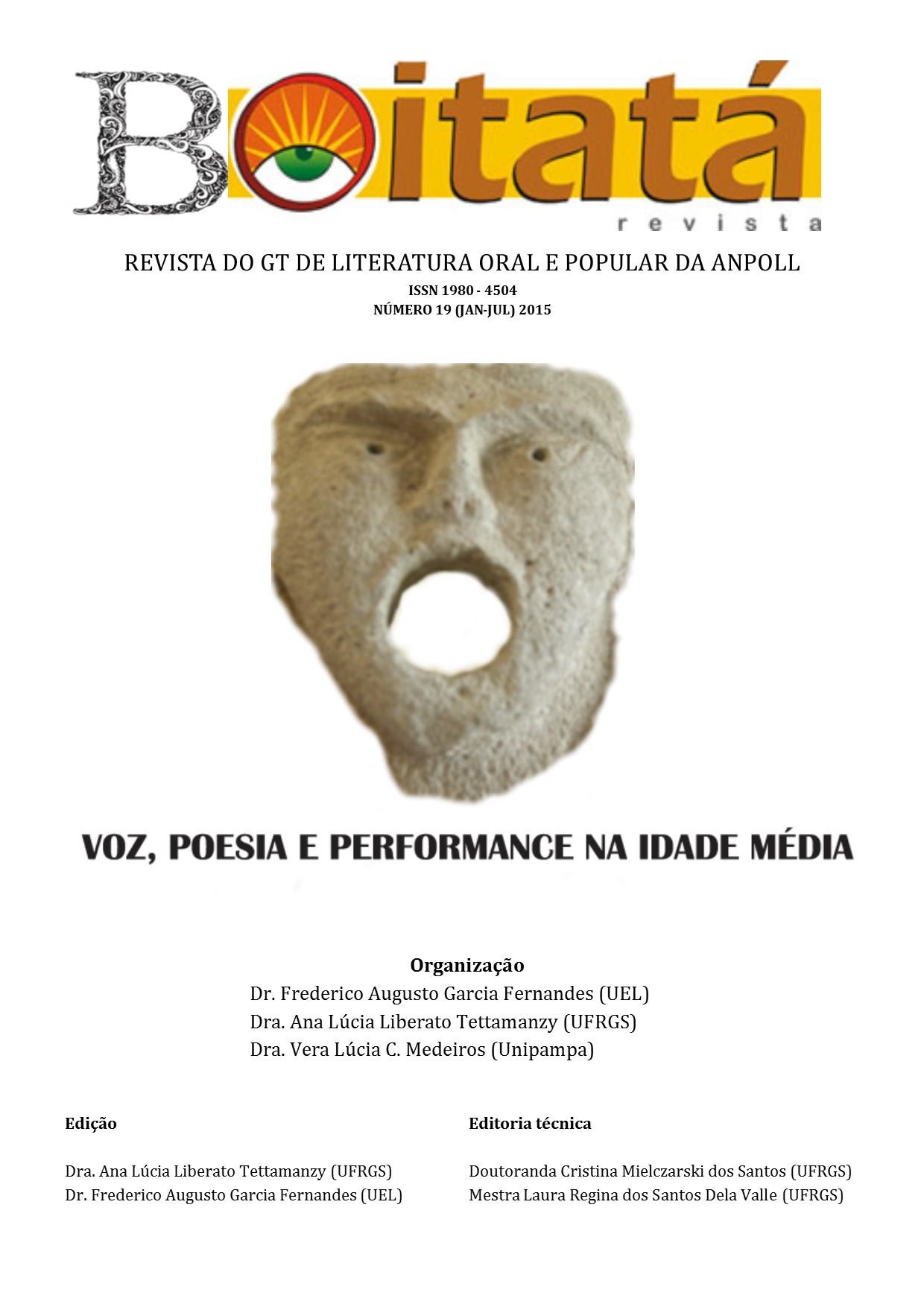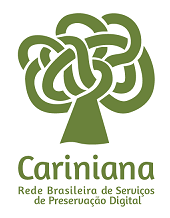Literature and orality: from poetry singing to poetry of song
DOI:
https://doi.org/10.5433/boitata.2015v10.e31507Keywords:
Poetry, Music, OralityAbstract
The orality of medieval literature is a fact, and it’s true because of the “orality indices”, tracks about the enunciation moment and the diachronic process of poetic text existence and transmission, presente in the texts which reveal a tendency of oral poetry manifestation, your verbal public concretion, in actualizing performances. So, in 1400, in Occident, the writing was not the principal communication means, and it not influenced the behavior or thought of poets and the expects of the public, most of them illiterate. Only in 19th century, the effects of the writing would be perceived, because of the compulsory education and the impress like mass writing, weakening the last oral traditions. However, the spoken word subsists and in Renaissance several texts were transformed into music “no doubt, because of the memory of the origin of the poetry, which was voice; because of this memory of voice which i salive in the poetry essence“ (ZUMTHOR, 2005, p. 74). But, only in Symbolism, in the end of the 19th century, Baudelaire tried to make the words had “a musical value” and it could “evoque the various sensations” (GOMES, 1994, p. 5-7). In 20th century, a strong tendency of making the voice interfere into the poetry message was imposed “sound poetry”. And it’s not only the oral poetry, but singing it. It happened when in Brazil “a generation of poets choose the popular music and not the books as a channel of communication”. So, this way, arises a crisis of the written forms of expressions. And, this dilemma, in the omnipresence media, rescued the unconditional importance of the democratic orality, specially in the transmission of the poetics manifestations, through the music.References
CANDÉ, Roland de. História universal da música. São Paulo: Martins Fontes, 2001.
CANDIDO, Antonio. Literatura e sociedade. São Paulo: Ed. Nacional, 1965.
FERNANDES, Frederico. A voz em performance. 2003. Tese (Doutorado em Letras) – Universidade Estadual Paulista, Assis.
GOMES, Álvaro Cardoso. O simbolismo. São Paulo: Ática, 1994.
LAPA, Manuel Rodrigues. Lições de literatura portuguesa: época medieval. 6. ed. Coimbra: Coimbra, 1996.
MOISÉS, Massaud. Dicionário de termos literários. São Paulo: Cultrix, 1974.
MOISÉS, Massaud. A literatura portuguesa. São Paulo: Cultrix, 1968.
MOISÉS, Massaud. A literatura portuguesa através dos textos. 26. ed. São Paulo: Cultrix, 1998.
ONG, Walter. Oralidade e cultura escrita: a tecnologização da palavra. Tradução de Enid Abreu Dobránszky. Campinas: Papirus, 1998.
PERRONE, Charles Andrew. Letras e letras da MPB. Rio de Janeiro: Elo, 1988.
RIQUER, Martin de. El trovador y su mundo. In: Historia y Vida. Barcelona, n. 103, p. 21- 31, oct. 1976.
SILVA, Anazildo Vasconcelos da. A paraliteratura. In: PORTELLA, Eduardo (Org.). Teoria Literária. Rio de Janeiro: Tempo Brasileiro, 1975. v. 1, p. 172-185.
SPINA, Segismundo. Presença da literatura portuguesa: era medieval. 7. ed. São Paulo: Difel, 1969.
TINHORÃO, José Ramos. História social da música popular brasileira. São Paulo: Ed. 34, 1998.
VASCONCELOS, Carolina Michaelis de. Cancioneiro da Ajuda. Lisboa: Imprensa NacionalCasa da Moeda, 1990.
ZUMTHOR, Paul. Escritura e nomadismo. Tradução de Jerusa Pires Ferreira e Sonia Queiroz. São Paulo: Ateliê, 2005.
ZUMTHOR, Paul. A letra e a voz. Tradução de Amalio Pinheiro e Jerusa Pires Ferreira. São Paulo: Companhia das Letras, 1993.
Downloads
Published
How to Cite
Issue
Section
License
Copyright (c) 2015 Boitatá

This work is licensed under a Creative Commons Attribution 4.0 International License.
Boitatá esta licenciada com CC BY sob essa licença é possível: Compartilhar - copiar e redistribuir o material em qualquer suporte ou formato. Adaptar - remixar, transformar, e criar a partir do material, atribuindo o devido crédito e prover um link para a licença e indicar se mudanças foram feitas.




















